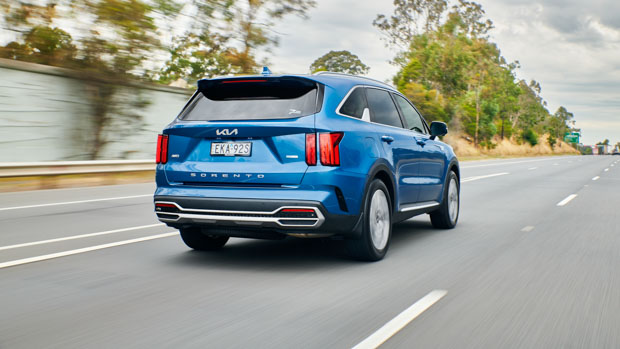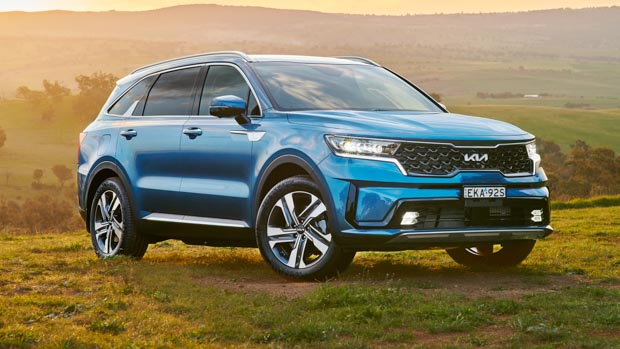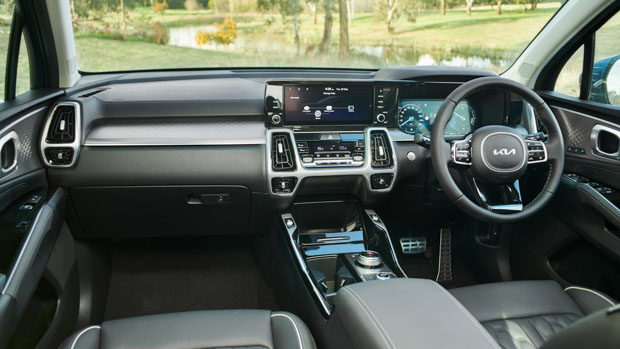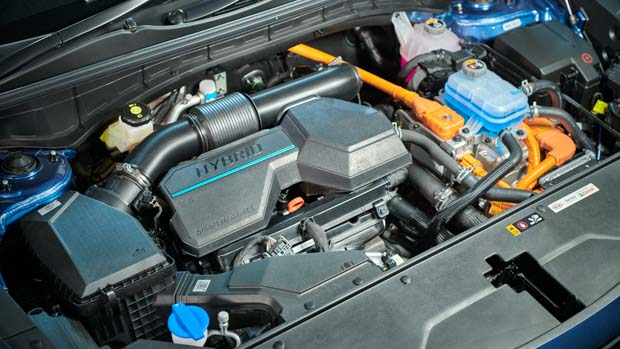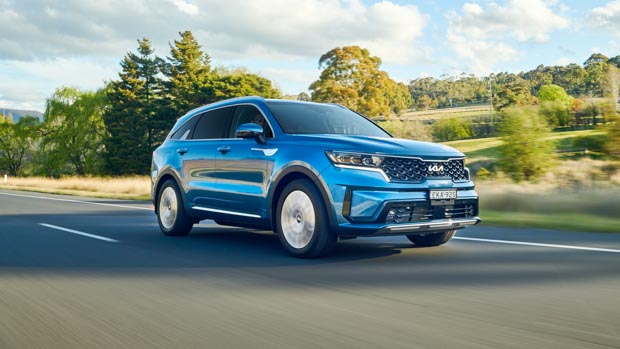-
Car Reviews
- All reviews
- Midsize SUVs
- Small cars
- Utes
- Small SUVs
- Large SUVs
- Large cars
- Sports SUVs
- Sports cars
- Vans
Latest reviews
- Car News
-
Car Comparisons
Latest comparisons
- Chasing Deals
Not content with just one hybrid option for its seven-seat Sorento SUV, Kia will soon add a self-charging Sorento Hybrid to its arsenal that gives families another eco-friendly option.
Kia has announced the 2022 Sorento Hybrid will arrive in Australia before Christmas this year to offer another more fuel-efficient option for its popular seven-seater.
It’s the second hybrid drivetrain to join the Sorento line-up, after the plug-in hybrid (PHEV) went on sale in Australia this week exclusively in top-spec GT-Line trim.
The decision to offer the Sorento PHEV exclusively in the most expensive grade was made due to global supply chain issue, resulting in Kia Australia prioritising the most popular, GT-Line grade, with the goal to offer the electric drivetrain in more grades later in 2022.
Roland Rivero, Kia Australia’s general manager of product, told Chasing Cars it would be an identical situation with the self-charging Sorento Hybrid.
Mr Rivero said production of the right-hand drive Sorento Hybrid begins in November and would arrive in Australia shortly after.
“We should see some of it coming through this side of Christmas, with (more stock to follow in) the early part of next year,” he said.
Mr Rivero said they would pitch the Sorento Hybrid against the Toyota Kluger Hybrid, which has been quite successful since its launch in June this year, adding that it would be “very competitive” with its Japanese rival.
The Sorento Hybrid is the second vehicle Kia will offer in Australia with both a self-charging and a plug-in hybrid option alongside the Niro, with the latter drivetrain priced 13.5 percent higher on average in the small SUV.
While Kia is yet to release pricing for the Sorento Hybrid we can expect it to be priced around $70,900 driveaway for the single GT-Line grade option, given the PHEV asks for $81,990 driveaway in the same trim.
Given that a Sorento GT-Line diesel with AWD is priced at $67,290 driveaway, it would give it a similar difference in price to the top-spec Kluger Grande, which is priced at $68,574 for the V6 petrol AWD or for the Hybrid AWD $75,400.
While an official specification has not yet been finalised, it’s likely we will see the Sorento Hybrid share a very similar level of equipment to the Sorento PHEV released this week.
This includes a luxury interior kitted out with quilted leather upholstery, heated and ventilated power front seats, a 10.25-inch centre touchscreen, a 12-speaker Bose sound system and an additional 12.3-inch display in front of the driver instead of analogue dials.
The Sorento Hybrid retains the same seven-seat capacity of the FWD V6 petrol and AWD turbodiesel models and will likely include family-friendly features likes rear sunshades, seven USB ports and a full suite of modern safety features.
Both Kia Sorento hybrid powertrains make use of a 1.6-litre turbocharged four-cylinder petrol engine, with the combustion engine producing 132kW of power and 265Nm of torque.
The Sorento self-charging hybrid adds a 44.2kW electric motor which brings outputs to 169kW of power and 350Nm of torque, with the two always working in conjunction with one another.
Kia arms the Sorento PHEV with a more powerful electric motor (67kW/304Nm) but the total output of the combined system is rated at 195kW/350Nm.
The key point of difference between the two Sorento hybrids lies in how they are used.
The Sorento PHEV is able to use the electric motors to drive up to 60km in our testing without using any fuel, which should be enough for most buyers to complete the daily commute before they go home and charge up the 14kWh battery for the following day.
Kia says the battery can charge at up to 3.3kW using an AC charger, and can be recharged from five to 95 percent capacity in 3 hours and 25 minutes via an AC wallbox. Alternatively, charging using a three-pin socket with no additional equipment takes about 7 hours.
The Sorento Hybrid uses both the 1.6-litre turbo engine and the electric motor all the time to achieve a claimed fuel efficiency rating of 6.3L/100km in the United States.
Comparatively, the Sorento PHEV used slightly more fuel in our testing, rating between 6.6-7.5L/100km in combined driving so how efficient the car depends on how you use it.
We expect to see more information for the Sorento Hybrid arise closer to its launch date at the end of the year.
Latest news
About Chasing cars
Chasing Cars reviews are 100% independent.
Because we are powered by Budget Direct Insurance, we don’t receive advertising or sales revenue from car manufacturers.
We’re truly independent – giving you Australia’s best car reviews.
